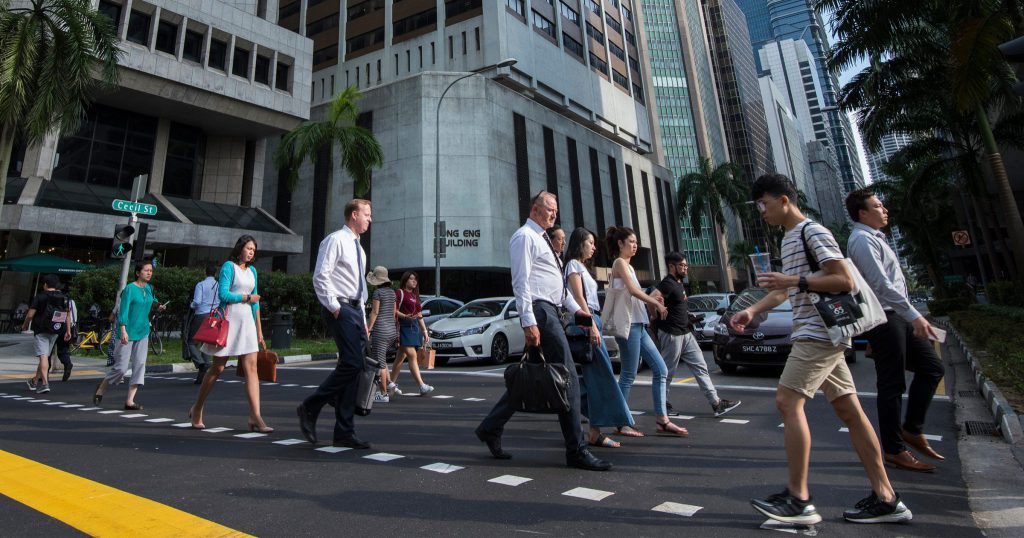This article originally appeared on Vulcan Post.
Early last week, the Ministry of Manpower (MOM) released its findings for the Labour Market in the first quarter of 2015. The deluge of facts and figures might be too much for you to take in at once, so here’s a helpful summary of the 5 main points you need to know about:

1. Overall employment contracted in the 1st quarter of 2015
Now, this does not mean that there are fewer jobs available. In fact, statistics given by the MOM showed that total employment reached 3,617,800, which was 2.7% more than a year ago. The report also showed that job vacancies still outnumber job seekers. There were 143 job openings per 100 job seekers as of March 2015 — similar to the 142 job openings per 100 job seekers as at December 2014.
You might be wondering, though: if that’s the case, why did the MOM say that “employment contracted by 6,100 in the first quarter of 2015”? Doesn’t it sound like we are headed for a recession?

Well, the contraction in employment in this quarter is likely due to the moderation of demands in certain sectors and the restrictions placed on hiring foreign manpower. Recession? It is a little too early to worry about that now, but one thing’s for sure: due to changes in our demographics, businesses will need to face up to lower manpower growth and restructure their operations to be less manpower-reliant in the future.
2. 1 in 3 unemployed are degree holders
We all know that our senior workers will gradually exit the workforce as they grow older, and be replaced by a labour force with higher educational qualifications. Statistics show that the proportion of the resident labour force with degrees has grown from 22% in 2004 to 32% in 2014.
Hence, it is quite natural that there is a higher share of degree holders among the unemployed than those without degrees. The unemployment rate for degree holders rose from 2.5% to 2.6% over the year, whilst those in other education groups have declined.
3. More PMETs made redundant
Likewise, the larger proportion of redundancies for PMETS (Professionals, Managers, Executives and Technicians) reflects the better educational profile of our workforce. Overall, however, redundancies have remained low as compared to the preceding quarter.
That said, while there is an increased access to private educational institutions which offer degrees of varying qualities, youth — and anyone looking to get a degree — should bear in mind the importance of quality when considering their educational and career paths.
In recent months, the Government has introduced the SkillsFuture initiatives, which help workers take on, improve and widen their skill sets to improve their employability. This is definitely a good way for us to progress — and should put a stop to concerns that we’re not receiving any help from the authorities.
4. Almost half of unemployed residents are aged 40 and over
This might sound surprising, but it really shouldn’t be, since older workers form a large composition of our labour force. It is unfortunate, but rather than worry about it excessively, we should instead encourage good hiring practices in order to reduce age bias. Employers need a mindset change on this issue, and for actual change to happen, sustained efforts by all parties is required to build capabilities on fair employment practices and reinforce positive perceptions of older workers.
One initiative to overcome age bias in the working world is the Special Employment Credit (SEC), where companies are provided up to a total of 11.5% of wage subsidies when they hire older workers. Of course, older PMETs should also work with employers to help themselves by upgrading their skills through the various available schemes.
5. Our youth unemployment is one of the lowest in the world

The unemployment rate edged up for younger residents aged below 30, while long-term unemployment (unemployed for at least 25 weeks) rose after improving over the year. But although the long-term unemployment rate increased, the rate has improved as compared to the previous two quarters. This means that the increased rate is not a sustained trend.
And our youth unemployment rate is actually one of the lowest in the world. Compared with other advanced economies like the US and Europe — which are experiencing youth unemployment rates in the double-digits — our youth unemployment rate is significantly less worrying.

Youth unemployment rates are typically higher than overall unemployment rates, because of the number of fresh school leavers seeking to join the workforce, as well as the higher incidence of job switching. These trends are common across most countries.
To counter the youth unemployment rate, the Government is continuing its efforts to maintain a strong and vibrant economy, and to ensure that our education and training systems continue to equip Singaporeans with industry-relevant jobs.
It’s never easy for workers and job-seekers when the economy is going through a period of change and transformation, but by keeping our skills relevant, we can expect more opportunities in time to come.













